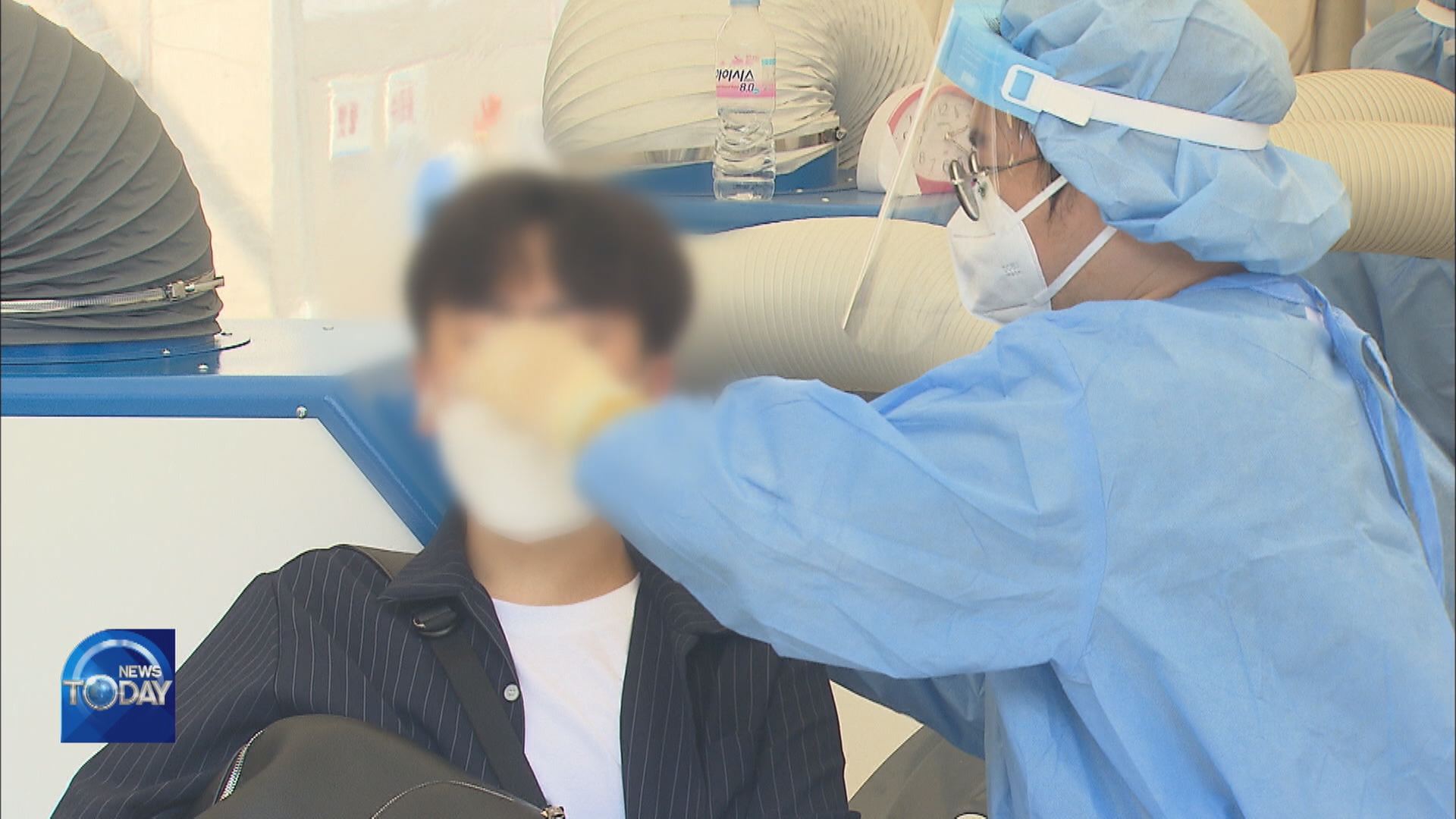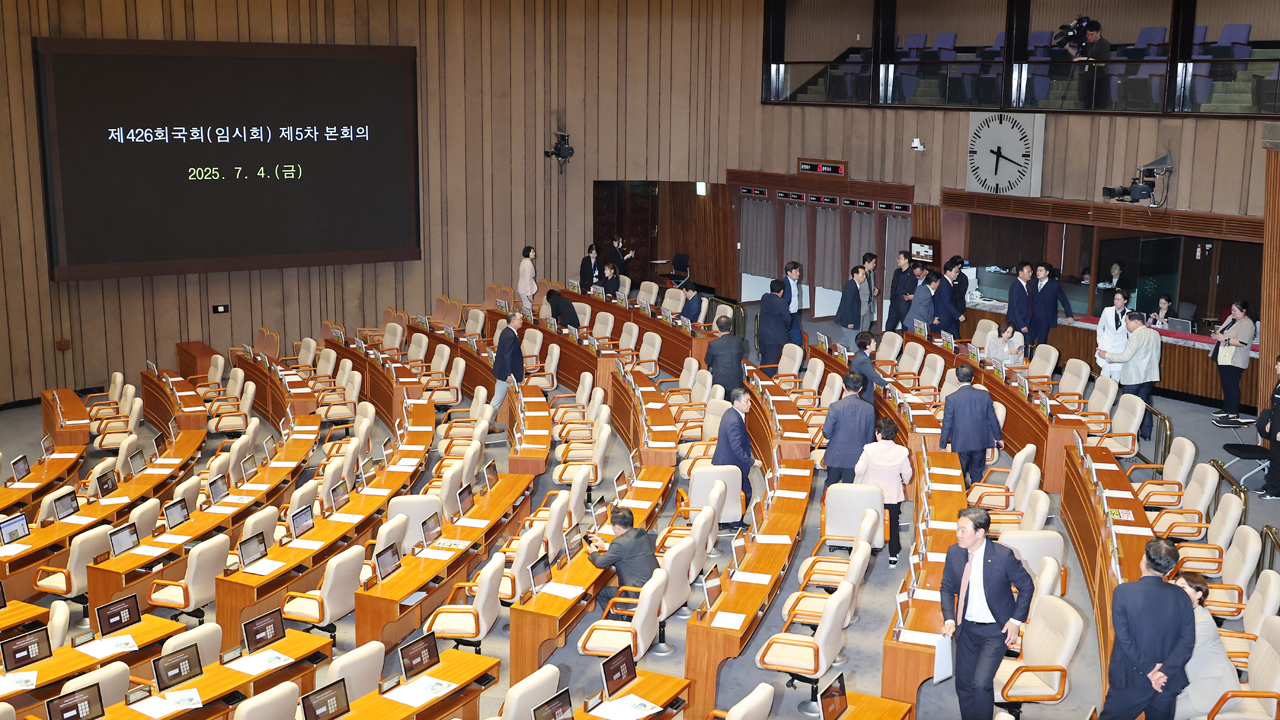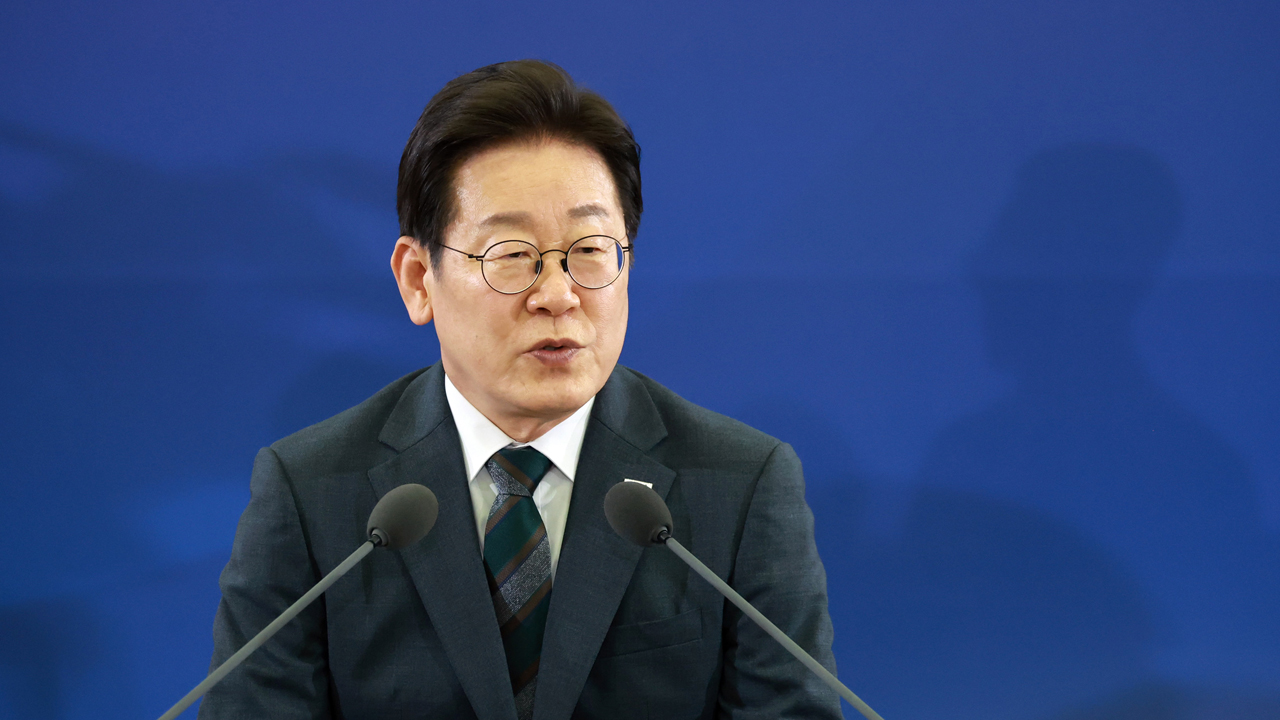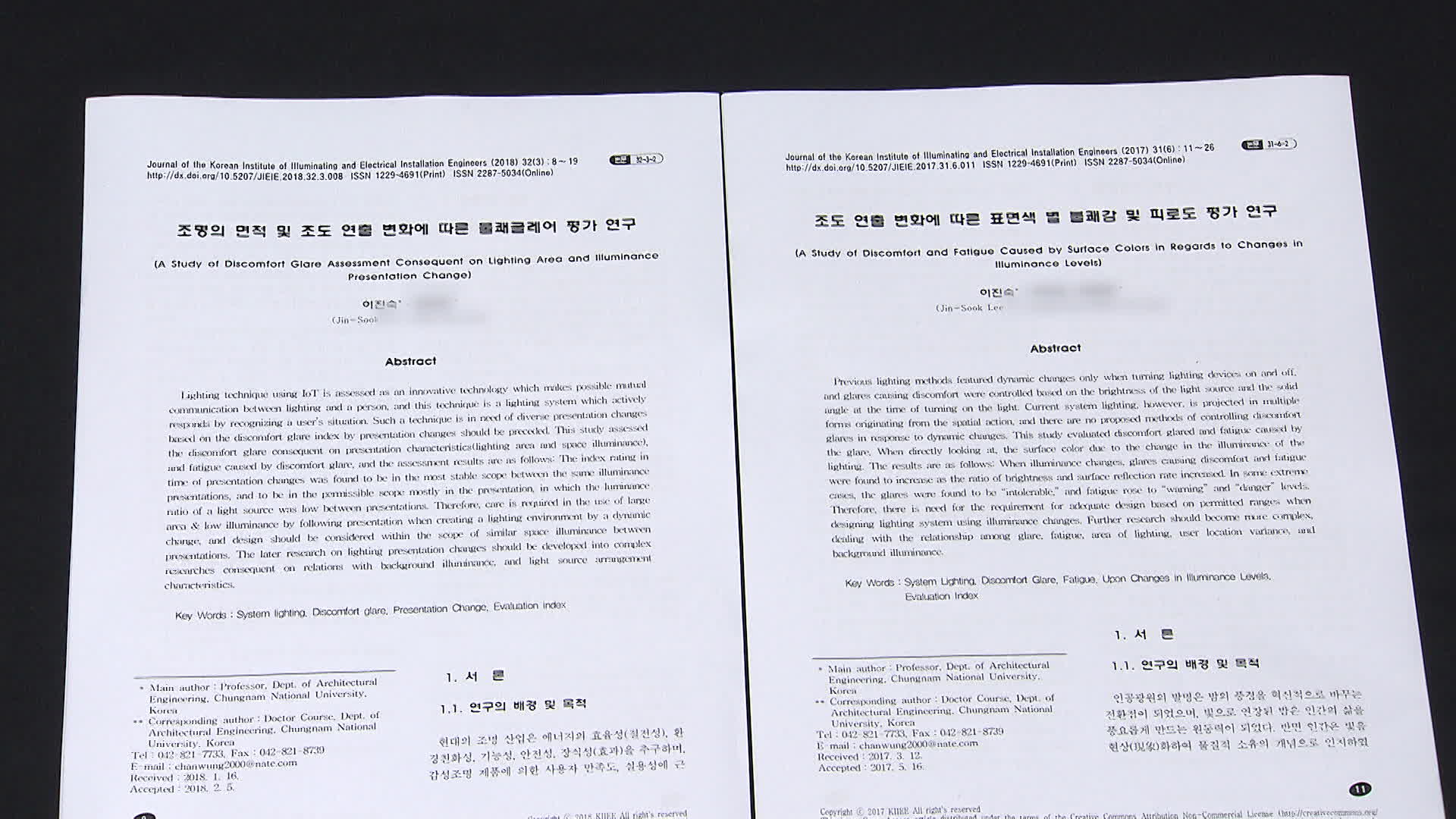INFECTIONS CONTINUE TO SOAR
입력 2021.08.17 (15:40)
수정 2021.08.17 (16:50)
읽어주기 기능은 크롬기반의
브라우저에서만 사용하실 수 있습니다.
[Anchor Lead]
Over 15-hundred-50 new COVID-19 cases were reported Monday as registered in the previous 24 hours, despite fewer tests on the Liberation Day holiday weekend. It's the highest tally for a Sunday to date. With little sign of the fourth wave abating, there is concern infections may further spread as vacationers return to the capital area.
[Pkg]
This is Noryangjin fish market in Seoul's Dongjak-gu district where its first case was confirmed on August 3. The cluster has grown to 62 people now, including vendors and their families.
[Soundbite] Park Yoon-sik(Seongbuk-gu Dist., Seoul) : "I heard the cluster hasn't reached customers so we came to enjoy some king crabs to celebrate my employment. But clearly, there's less traffic here."
Inside the market, a mobile virus test center is set up. A cluster outbreak of 24 cases is also confirmed at a logistics center in Seoul's Songpa-gu district. The capital region accounts for 57% of all new local transmissions. Infections in non-capital areas are back up to the 40% range. The average daily caseload also increased 19% last week compared to the week before. The number had plateaued in the greater Seoul area due to effects of the highest Level 4 distancing, but it's creeping up again amid the summer vacation season. The spread has accelerated in the rest of the country. The virus reproduction rate, or the number of infections caused by a single patient, has been declining since the 3rd week of July, but it's back up to 1.1. This rate is currently higher in non-capital areas. Another concern is the number of critically ill patients which is hovering above 300 for 17 straight days. Also on Monday, 11 deaths were reported, the highest in 174 days.
[Soundbite] Kwon Jun-wook(Central Disease Control HQs) : "It's confirmed that a greater caseload may well increase the number of critically ill patients and deaths. Nearly 90% of hospitalizations and fatalities are currently from the unvaccinated."
Over 5,000 people heading back to Seoul were tested at temporary test sites installed at four highway rest areas during the holiday weekend. Eleven hidden infections were detected.
Over 15-hundred-50 new COVID-19 cases were reported Monday as registered in the previous 24 hours, despite fewer tests on the Liberation Day holiday weekend. It's the highest tally for a Sunday to date. With little sign of the fourth wave abating, there is concern infections may further spread as vacationers return to the capital area.
[Pkg]
This is Noryangjin fish market in Seoul's Dongjak-gu district where its first case was confirmed on August 3. The cluster has grown to 62 people now, including vendors and their families.
[Soundbite] Park Yoon-sik(Seongbuk-gu Dist., Seoul) : "I heard the cluster hasn't reached customers so we came to enjoy some king crabs to celebrate my employment. But clearly, there's less traffic here."
Inside the market, a mobile virus test center is set up. A cluster outbreak of 24 cases is also confirmed at a logistics center in Seoul's Songpa-gu district. The capital region accounts for 57% of all new local transmissions. Infections in non-capital areas are back up to the 40% range. The average daily caseload also increased 19% last week compared to the week before. The number had plateaued in the greater Seoul area due to effects of the highest Level 4 distancing, but it's creeping up again amid the summer vacation season. The spread has accelerated in the rest of the country. The virus reproduction rate, or the number of infections caused by a single patient, has been declining since the 3rd week of July, but it's back up to 1.1. This rate is currently higher in non-capital areas. Another concern is the number of critically ill patients which is hovering above 300 for 17 straight days. Also on Monday, 11 deaths were reported, the highest in 174 days.
[Soundbite] Kwon Jun-wook(Central Disease Control HQs) : "It's confirmed that a greater caseload may well increase the number of critically ill patients and deaths. Nearly 90% of hospitalizations and fatalities are currently from the unvaccinated."
Over 5,000 people heading back to Seoul were tested at temporary test sites installed at four highway rest areas during the holiday weekend. Eleven hidden infections were detected.
■ 제보하기
▷ 카카오톡 : 'KBS제보' 검색, 채널 추가
▷ 전화 : 02-781-1234, 4444
▷ 이메일 : kbs1234@kbs.co.kr
▷ 유튜브, 네이버, 카카오에서도 KBS뉴스를 구독해주세요!
- INFECTIONS CONTINUE TO SOAR
-
- 입력 2021-08-17 15:40:06
- 수정2021-08-17 16:50:28

[Anchor Lead]
Over 15-hundred-50 new COVID-19 cases were reported Monday as registered in the previous 24 hours, despite fewer tests on the Liberation Day holiday weekend. It's the highest tally for a Sunday to date. With little sign of the fourth wave abating, there is concern infections may further spread as vacationers return to the capital area.
[Pkg]
This is Noryangjin fish market in Seoul's Dongjak-gu district where its first case was confirmed on August 3. The cluster has grown to 62 people now, including vendors and their families.
[Soundbite] Park Yoon-sik(Seongbuk-gu Dist., Seoul) : "I heard the cluster hasn't reached customers so we came to enjoy some king crabs to celebrate my employment. But clearly, there's less traffic here."
Inside the market, a mobile virus test center is set up. A cluster outbreak of 24 cases is also confirmed at a logistics center in Seoul's Songpa-gu district. The capital region accounts for 57% of all new local transmissions. Infections in non-capital areas are back up to the 40% range. The average daily caseload also increased 19% last week compared to the week before. The number had plateaued in the greater Seoul area due to effects of the highest Level 4 distancing, but it's creeping up again amid the summer vacation season. The spread has accelerated in the rest of the country. The virus reproduction rate, or the number of infections caused by a single patient, has been declining since the 3rd week of July, but it's back up to 1.1. This rate is currently higher in non-capital areas. Another concern is the number of critically ill patients which is hovering above 300 for 17 straight days. Also on Monday, 11 deaths were reported, the highest in 174 days.
[Soundbite] Kwon Jun-wook(Central Disease Control HQs) : "It's confirmed that a greater caseload may well increase the number of critically ill patients and deaths. Nearly 90% of hospitalizations and fatalities are currently from the unvaccinated."
Over 5,000 people heading back to Seoul were tested at temporary test sites installed at four highway rest areas during the holiday weekend. Eleven hidden infections were detected.
Over 15-hundred-50 new COVID-19 cases were reported Monday as registered in the previous 24 hours, despite fewer tests on the Liberation Day holiday weekend. It's the highest tally for a Sunday to date. With little sign of the fourth wave abating, there is concern infections may further spread as vacationers return to the capital area.
[Pkg]
This is Noryangjin fish market in Seoul's Dongjak-gu district where its first case was confirmed on August 3. The cluster has grown to 62 people now, including vendors and their families.
[Soundbite] Park Yoon-sik(Seongbuk-gu Dist., Seoul) : "I heard the cluster hasn't reached customers so we came to enjoy some king crabs to celebrate my employment. But clearly, there's less traffic here."
Inside the market, a mobile virus test center is set up. A cluster outbreak of 24 cases is also confirmed at a logistics center in Seoul's Songpa-gu district. The capital region accounts for 57% of all new local transmissions. Infections in non-capital areas are back up to the 40% range. The average daily caseload also increased 19% last week compared to the week before. The number had plateaued in the greater Seoul area due to effects of the highest Level 4 distancing, but it's creeping up again amid the summer vacation season. The spread has accelerated in the rest of the country. The virus reproduction rate, or the number of infections caused by a single patient, has been declining since the 3rd week of July, but it's back up to 1.1. This rate is currently higher in non-capital areas. Another concern is the number of critically ill patients which is hovering above 300 for 17 straight days. Also on Monday, 11 deaths were reported, the highest in 174 days.
[Soundbite] Kwon Jun-wook(Central Disease Control HQs) : "It's confirmed that a greater caseload may well increase the number of critically ill patients and deaths. Nearly 90% of hospitalizations and fatalities are currently from the unvaccinated."
Over 5,000 people heading back to Seoul were tested at temporary test sites installed at four highway rest areas during the holiday weekend. Eleven hidden infections were detected.
이 기사가 좋으셨다면
-
좋아요
0
-
응원해요
0
-
후속 원해요
0










![[HEADLINE]](https://news.kbs.co.kr/data/news/2021/08/17/20210817_luNAj8.jpg)






이 기사에 대한 의견을 남겨주세요.